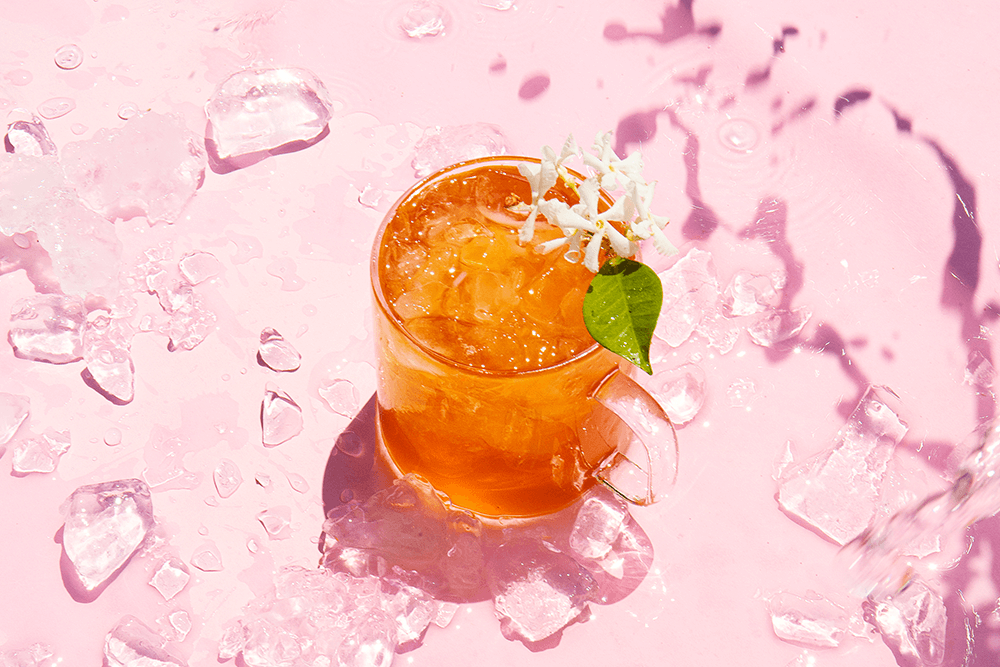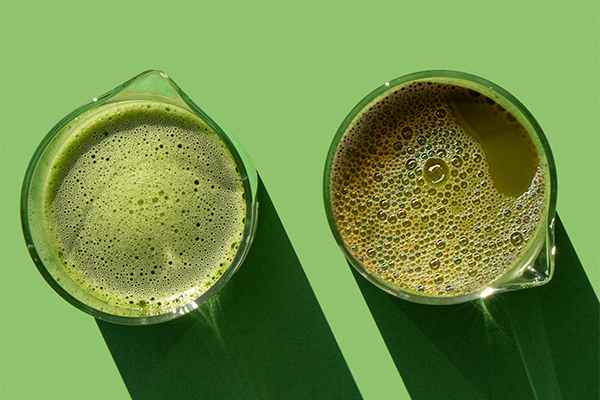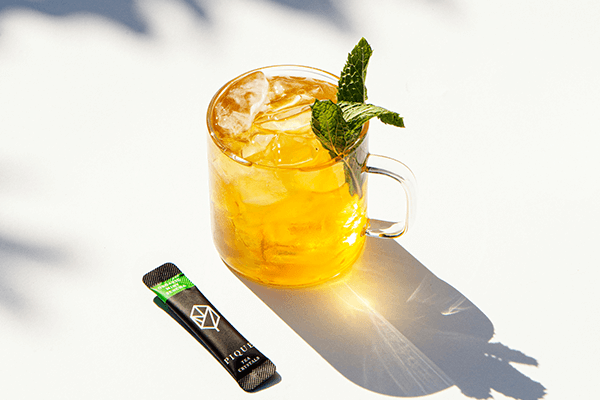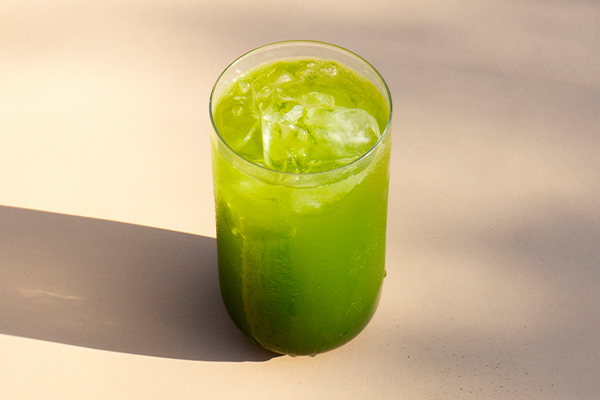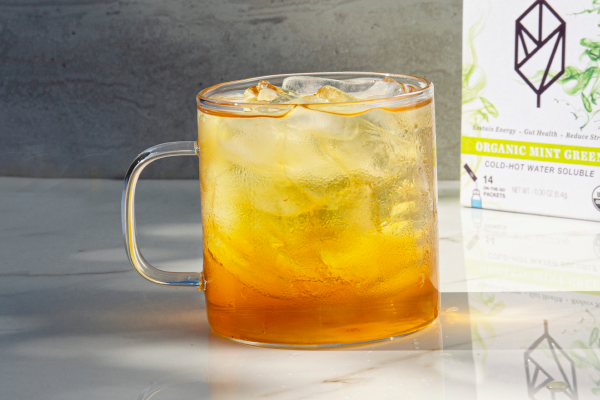Jasmine tea is a popular flavored or scented tea. It makes an elegant and floral cup of tea that’s considered a favorite among tea drinkers.
Perhaps surprisingly, there are in fact many different varieties of jasmine tea. You’ll find that different types of jasmine have a stronger taste than others and, similarly, some types will be more energizing.
We’ve got the ultimate guide on jasmine tea varieties, and how to choose the best!
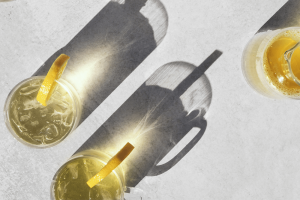
What is jasmine tea?
It’s one of the oldest flavored teas and has been documented in China for centuries, but it’s not clear that jasmine tea originated there. Most people do consider it a Chinese tea.
Although it’s usually made using green tea, jasmine tea can be made with white, black or green tea — and even less common, it can be made with oolong tea. The tea leaves are combined with jasmine flowers, also from the fujian province, to create a distinct, floral smell and taste.
While the flavor of jasmine tea varies depending on the base tea, it’s typically sweet, fresh, and delicate tasting.
The caffeine content also depends on what tea is used for the base — something to be aware of if you’re limiting your caffeine intake for any reason. (White tea has little to no caffeine, green tea has minimal amounts, and black tea has a moderate amount.)
How is jasmine tea made?
Making jasmine tea requires several steps. The delicate taste is the result of careful and skilled effort.
- Harvesting the tea leaves: Tea farmers start harvesting tea leaves (from the Camellia Sinensis tea plant) in early spring when they’re delicate and fresh. Using leaves from later harvests could result in a bitter flavor, possibly overwhelming the jasmine.
- Drying & storing tea leaves: Since jasmine flowers don’t bloom until mid to late summer, the tea leaves are dried and stored until then.
- Picking jasmine blossoms: Traditionally, jasmine flowers are picked during the day when the buds are closed. As they cool in the evening, the flower starts to open and the scenting process can begin.
- Scenting process: The scenting process can happen one of two ways: the traditional method or the modern method (which is often used for mass production).
Traditionally, trays of dried tea leaves and fresh jasmine flowers are layered and left overnight. As the flowers open overnight, the tea leaves absorb the aroma, oils, and moisture from the jasmine flowers. In the morning, the jasmine flowers are removed and the tea leaves are dried. Come night, the process begins again with more fresh flowers.
As the scenting process is repeated, the jasmine flavor and aroma become stronger. A high-quality jasmine tea will be scented multiple times. (Pique’s jasmine green tea, for example, is scented three to five times.)
Although the traditional method results in a better tea, it’s a labor- and time-intensive process, so some modern tea manufacturers go a different route. They may blend jasmine flowers in with the tea leaves or flavor the tea leaves with natural or artificial flavoring.
- Firing: This is the final drying stage for jasmine tea. It seals in the flavor and aroma before the tea company packages it.
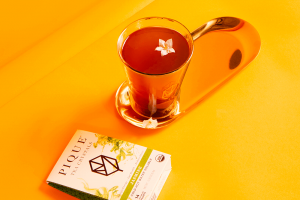
Best jasmine tea types
You can find jasmine tea in different styles. Here are a few types you may want to try:
- Jasmine Dragon Pearl: After the scenting process, the tea leaves are rolled into tight balls giving them a neat, pearl-like appearance. Along with a fantastic taste, jasmine pearls also offer a fun visual show when they’re brewed: With pearl tea, each tiny ball unfurls in the water.
- Jasmine Silver Needle (Yin Hao Jasmine): This a lovely jasmine tea made using a white tea base. Silver needle tea leaves are individually picked in early spring, and only the top leaf buds are used. The leaves are known for their silver tips. This type of jasmine tea is scented as many as seven times. The downy leaves scented with jasmine make a delicate, floral tea.
- Loose Leaf Jasmine: Individual leaves (not leaf shoots) are used for loose leaf jasmine tea. It makes a pleasant brew.
- Jasmine Green Tea Crystals: High-quality jasmine green tea is extracted via Cold Brew Crystallization. This process preserves up to 12 times the nutrient content compared to other tea, while delivering the same great taste.
Why is jasmine tea so expensive?
Due to the often intensive process to make jasmine tea, it’s usually sold at a higher price point. The price will increase depending on the scenting process and the type of tea leaf used. Organic green tea or silver needle tea, for example, will likely cost more.
Health benefits of jasmine tea
Because jasmine tea is usually made from green tea, it also has many of the same health benefits.
It’s loaded with polyphenols called catechins — these act as antioxidants and help protect your cells from damage.
Studies have shown that jasmine green tea helps support a healthy heart and dental health. (1, 2) And, according to researchers, it could help support a healthy metabolism. (3)
Studies have also shown that jasmine green tea supports healthy blood sugar levels. (4) And the scent and flavor of jasmine can support calmness. (5)
What is the best time to drink jasmine tea?
The best time to drink jasmine tea depends on the base tea it’s made with and your sensitivity to caffeine. Jasmine tea that’s made with black or green tea is probably a better morning or afternoon drink since they’re caffeinated. Jasmine white tea can be enjoyed at any hour.
Something else to keep in mind: The catechins that green tea leaves contain could reduce your body’s ability to absorb iron. (6) So if you’re prone to anemia, you may want to discuss jasmine green tea with your doctor.
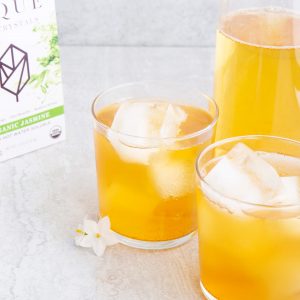
How do you prepare the best jasmine tea?
Before you brew your jasmine tea, make sure you know what base tea is used. It will impact steeping time. Here’s how long you should steep each variety:
- Jasmine with black tea: 3 to 5 minutes
- Jasmine with green tea: 1 to 2 minutes
- Jasmine with white tea: 2 to 3 minutes
Pick a quality tea (either loose leaf tea, tea bags, sachets or crystals from your favorite tea brand) and cover it with hot water. Steep for the appropriate amount of time, strain if necessary, and enjoy!
Over-steeping can produce a bitter flavor, so keep an eye on your jasmine tea. And as with other teas, you can add any non-dairy milk of your choosing for a luxurious drink. If you want a little extra flavor, jasmine green tea pairs well with vanilla. It tastes great hot or as iced tea. You can also find jasmine tea as part of herbal tea blends.
A bouquet in a cup
Jasmine tea is best known for its exquisite floral aroma and flavor. But it also makes a healthy daily drink that’s easy to prepare and has few side effects.
The taste of jasmine tea is soft and complex at the same time. The delicate flavor is perfect for tea lovers and newcomers alike.
